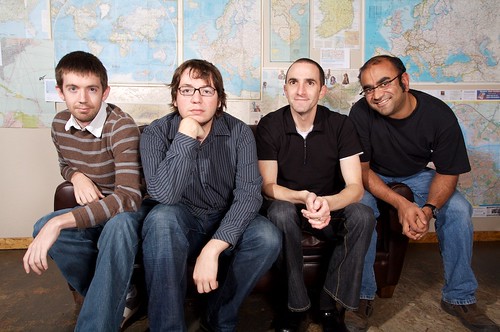Jason posted a logic puzzle on his site that Carrie and I just took the time to figure out. Just to be clear, I don’t know the answer and I’ve only read about the following puzzle on Jason’s site:
>You are given two ropes and a lighter. This is the only equipment you can use. You are told that each of the two ropes has the following property: if you light one end of the rope, it will take exactly one hour to burn all the way to the other end. But it doesn’t have to burn at a uniform rate. In other words, half the rope may burn in the first five minutes, and then the other half would take 55 minutes. The rate at which the two ropes burn is not necessarily the same, so the second rope will also take an hour to burn from one end to the other, but may do it at some varying rate, which is not necessarily the same as the one for the first rope. Now you are asked to measure a period of 45 minutes. How will you do it?
This puzzle reminds me of a trick you can do with a ruler. Take the ruler and place it on top of the index finger from each hand, keeping the ruler level. Slide your fingers towards the center. The ruler will never fall off, despite the rate at which your fingers slide vary, and you will always arrive at the center of the ruler.
A similar trick can be done to determine 45 minutes of time passing with the burning of the rope.
First, light both ends of one rope at the exact same time, and one end of the second rope. Given the properties of the rope in the puzzle, it would seem that it’d take exactly 30 minutes for the rope with two burning ends to burn completely.
At the exact moment the first rope has burned up, light the other unlit end of the other rope. When both of its burning ends meet, another 15 minutes will have passed. You’ll be left with no ropes, but you’ll at least know that 45 minutes in total have passed.
I’ll see if we were close once he posts the answer.
